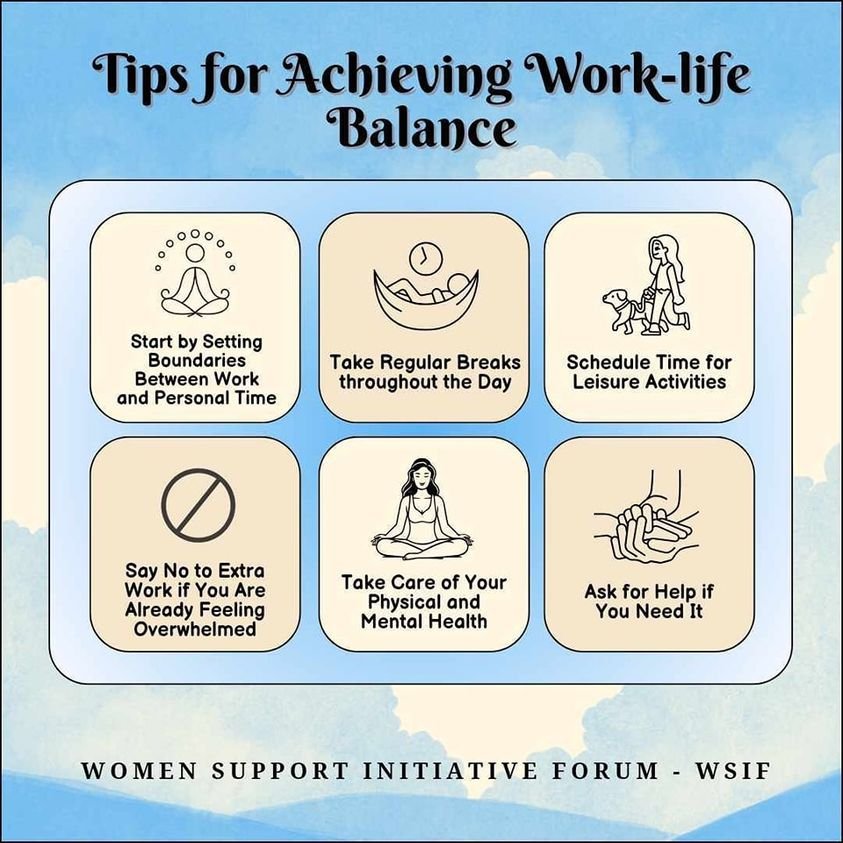Feeling overwhelmed? Juggling work, family, and everything in between can seem impossible. You’re not alone. Work-life balance, the equilibrium between professional responsibilities and personal activities, is a challenge for many. But it’s not just a nice-to-have; it’s crucial for your well-being and productivity. When work life becomes too demanding and you forget to nurture your personal life, it can lead to burnout which costs the U.S. between $150 and $190 billion annually in healthcare. Fortunately, small changes can make a big difference.
This guide provides actionable work-life balance tips to help you reclaim your time and create a more fulfilling life. We’ll cover everything from setting boundaries to prioritizing self-care, and how to connect with resources for further support.
Understanding the Work-Life Imbalance Equation
Before diving into the solutions, let’s acknowledge the challenges. Excessive workloads, the inability to disconnect from work (thanks, technology!), and a lack of support can all contribute to an imbalance. Many people also struggle to say no to new requests, fearing they will miss out on a crucial work opportunity. Are you constantly tired, stressed, or missing important personal events? These are telltale signs that your work-life balance needs attention.
The struggle is real, but it’s manageable. Implementing even a few of the following strategies can free up your time and mind.
Easy-to-Implement Strategies for a More Balanced Life
Creating work-life balance isn’t about achieving perfection; it’s about finding what works for you. Here are some practical work-life balance tips you can start implementing today:
- Identify Your Productivity Peaks: Schedule your most demanding tasks for when you’re at your best.
- Schedule Regular Breaks: Step away from your work every 90 minutes to recharge.
- Set Strict Working Hours: Define when you start and stop working.
- Plan Ahead: Break down projects into smaller, manageable steps with completion dates.
- Pursue Your Passions: Dedicate time to enjoyable activities every day, even if it’s just for 15 minutes.
- Book Vacations: Time off is essential for reducing stress and increasing motivation.
- Prioritize What Matters: Decide which personal commitments are non-negotiable.
- Avoid Thinking About Tasks During Breaks: Use your breaks to disconnect completely.
- Schedule Social Activities: Maintain at least one social event per week.
- Say No: Politely decline new requests when your plate is already full.
- Ask for Help: Don’t be afraid to seek support from colleagues, managers, friends, and family.
- Explore Flexible Working: Take advantage of telecommuting or shortened workweeks if available.
- Separate Work and Play: Designate distinct spaces for work and relaxation, especially when working from home.
- Prioritize Mental Health: Focus on your well-being and seek professional support if needed.
Supercharge Your Workday for Optimized Wellbeing
These are just the tip of the iceberg. Let’s explore tactics to integrate new habits into your daily routine.
- Add some Adventure: Plan a solo adventure day for self-care.
- Capitalize on Your High Energy Points: Tackle difficult tasks when you’re feeling energetic, a “Task Time Capsule.”
- Collaborative Cohorts: Try a “Coworking Club,” where you work alongside friends or family, online or in person, to foster productivity as a community.
- Digital Sunset: Disconnect from technology before bed with a “Digital Sunset”.
- Hobby Hour: Dedicate time to hobbies during “Hobby Hour”.
- Walkie-Talkie Meetings: Conduct meetings while walking.
- Plan and take small trips: Take short trips for refreshment by planning a “Weekend Vacay”.
- Joy and Generosity: Allocate funds for enjoyable experiences with a “Joy Budget” and set aside money for acts of kindness with a “Generosity Budget”.
- Set email boundaries: Specify how often you will check email with dedicated “Email Office Hours”.
- Mindful Lunching: Practice gratitude and mindful eating during “Lunch Meditation”.
- Track your activity: Track daily activities to identify time usage patterns through “Life-Logging”.
- Breathwork Breaks: Incorporate deep breathing exercises into your day.
- Propose a Flex Day: Negotiate a flexible workday with your manager.
- Digital decluttering: Organize digital spaces with a “Digital Declutter”.
- Skill swap with colleagues: Exchange skills with others.
Refresh Your Mindset for Greater Capacity
Incorporating breaks for mindful reflection can add calm and clarity to even the busiest work schedule.
- Visual Escape: Use uplifting visuals for mental breaks.
- Unplugged Lunch: Eat without distractions.
- Intentional Daydreaming: Allow the mind to wander.
- Five Senses Reset: Engage all senses for mental clarity.
- Internet-Free Day: Disconnect from the internet periodically.
How Your Manager Can Support Your Work-Life Balance
It’s not just on you. Employers also play a vital role in fostering a supportive environment. Managers should:
- Treat their employees as individuals, recognizing their unique priorities and perspectives.
- Lead by example, avoiding late-night emails and meetings.
- Inform employees about available support services and options.
- Continuously update workplace policies to accommodate the evolving needs of the workforce.
Dive Deeper into Specific Areas of Work-Life Balance
Ready to explore specific areas and actionable steps? We’ve got you covered.
- Redefining Success: For some, their identity is deeply ingrained in their careers. Consider whether you live to work or work and if that’s the foundation on which to grow your life.
- Juggling School and Work: For students, balancing education and a career can be especially challenging. Learn how to balance college and without sacrificing your well-being.
A Continuous Journey, Not a Destination
Achieving work-life balance is an ongoing process, not a one-time fix. Regular evaluation and adjustment are key. Experiment with different strategies, track your progress, and don’t be afraid to ask for help. Remember, investing in your well-being will not only enhance your personal life but also boost your productivity and overall success.
- Doctor Work Life Balance: Proven Strategies for Physician Well-being - November 20, 2025
- Find Your Work-Life Harmony: Quotes for a Fulfilling Life - November 18, 2025
- CRNA Work-Life Balance: Strategies for a Healthier Lifestyle - November 16, 2025
















